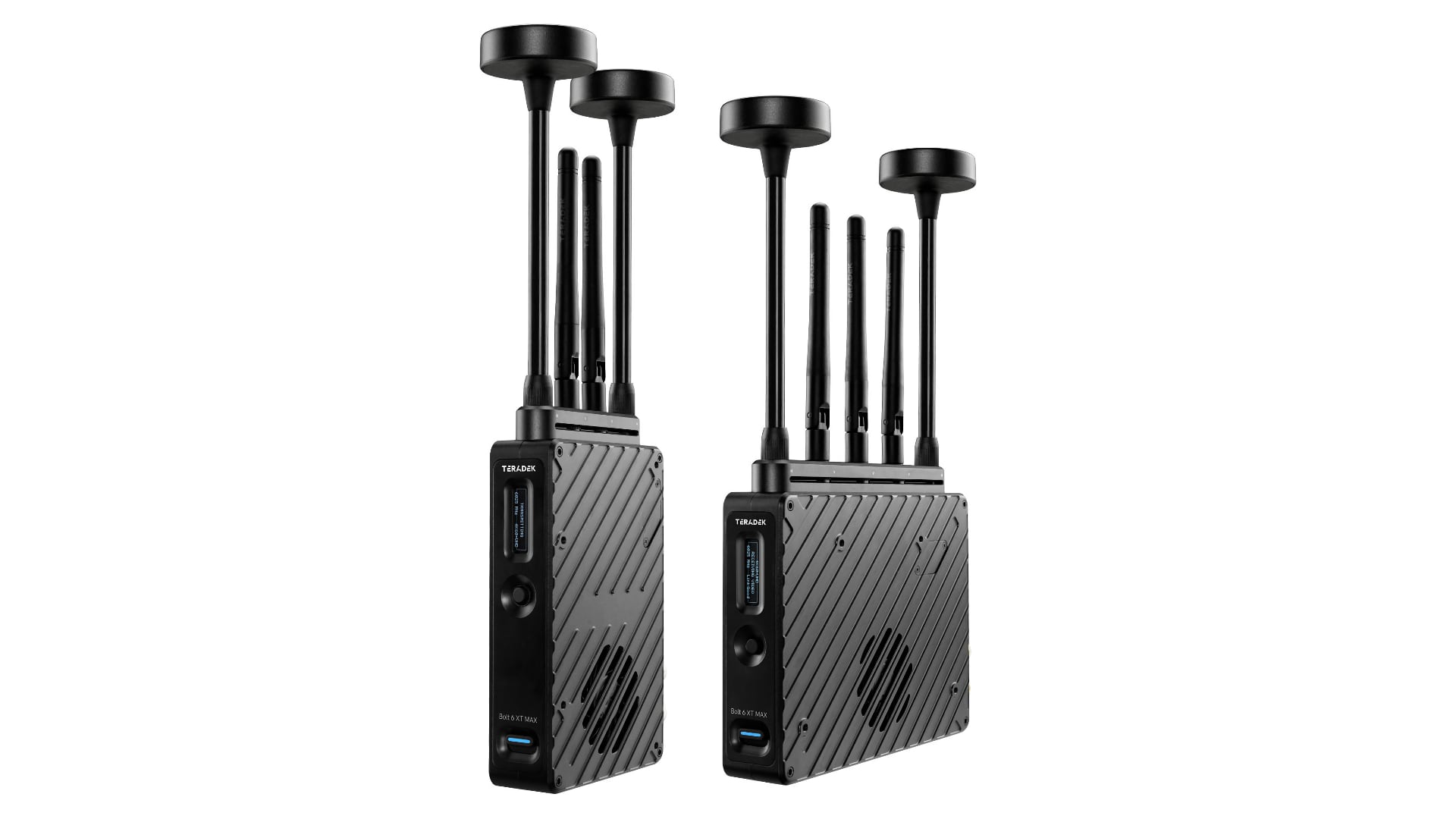
The new Bolt 6 is the industry’s first 6GHz wireless system, with Teradek promising new tools, features, and scalable device options to fit every wireless workflow.
Teradek’s new Bolt 6 opens up a whole new area of spectrum by transmitting and receiving over the newly-available 6GHz frequency band as well as the industry-standard 5GHz. This should hopefully help dramatically reduce signal congestion in challenging RF environments, such as exactly the sort of big sporting events that wireless connectivity is most used for.
It’s fully backwards-capable. Every Bolt 6 device will pair with every Bolt 4K device on 5GHz bands (though, somewhat naturally, a Bolt 6 TX/RX combination is required for 6GHz connectivity).
In a similar manner to Bolt 4K, the Bolt 6 Series represents an ecosystem of devices optimized for different user workflows. New Bolt 6 features on all models include an improved “Long Range” mode and an SDI Eye Pattern Tool to check SDI cable integrity. Bolt 6 MAX models also feature integrated flexible H antennas for increased field longevity.
Elsewhere the range is sliced and diced in the following manner:
Bolt 6 XT offers the most upgrades in the Bolt 6 family, including a redesigned form factor that’s smaller, lighter, cooler, and up to 50% quieter than its Bolt 4K counterpart. Bolt 6 will also feature an integrated 5-pin USB for a more seamless SmallHD camera-control setup.
Bolt 6 LT fills the same demand for a compact, lightweight solution with a 750–5000+ ft. range as Bolt 4K LT, and is fully-capable of operating on the 12 U-NII 5 channels like the rest of the Bolt 6 line. Bolt 6 LT also comes in an HDMI-only version.
Bolt 6 Monitor Modules offer ranges of 750–1500 ft. and integrate seamlessly into SmallHD Smart 7 Series Monitors like their Bolt 4K counterparts.
6GHz isn’t available everywhere yet, though different upper and lower components of its overall spectrum are already firmly implemented in North America, Europe, and Australasia, with LATAM also slowly coming on stream.
Tags: Production


Comments